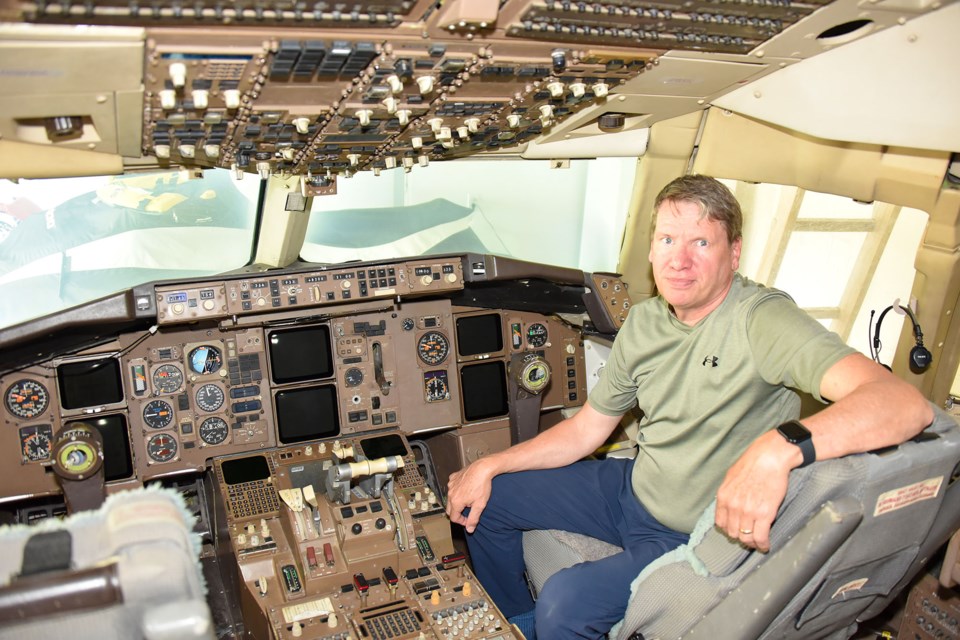Perry Van Veen has spent the past five years assembling a personal tribute to a Canadian aviation legend: an Air Canada Boeing 767 passenger jet, nicknamed the Gimli Glider for an astonishing feat performed 40 years ago today.
Sixty passengers were onboard flight AC143 when the plane, piloted by Captain Bob Pearson, ran out of fuel on its Montreal-Ottawa-Edmonton route on July 23, 1983. A series of screw-ups led to the mishap, including a conversion error between gallons and litres of aviation fuel. Canada had recently embraced the metric system, and clearly the aircraft refueler was still thinking in imperial measures. The 767 was also brand new, having been introduced by Boeing to the market only 12 months earlier.
Unable to reach the closest major airport — Winnipeg — once the peril appeared and the aircraft was out of fuel, Pearson skilfully glided the 80-ton plane to an abandoned military airstrip in Gimli, Manitoba, chasing hot-rodders and kids on bicycles from the asphalt runway in the process. All passengers and crew survived the landing. The twin-engine aircraft was repaired and put back into service, and was retired from the Air Canada fleet in 2008. Today it sits dejected in an aircraft “bone yard” in California’s Mojave Desert.
An air traffic safety investigation was convened after the incident, which concluded that Air Canada should implement better training in the new aircraft type for ground handlers and pilots, and commended Pearson and his crew for their skill and professionalism.
The event has always intrigued Van Veen, a Welland, Ontario resident and a former pilot himself, who still dabbles in aviation parts as a hobby. He decided that he would re-create a cockpit identical to that of the Gimli Glider, and in 2017 bid successfully on the nose of a Boeing 767 from a retired Delta Airlines jet in Arizona.
Today, the nine foot tall, 3000-pound aluminum shell sits on wheeled dollies in Van Veen's garage.
“My cockpit is from exactly the same type of bird as the Gimli Glider,” said Van Veen. “A lot of these Boeing 767s are still flying today. Many have been converted to cargo carriers.”
Van Veen was able to get a number of parts and interior panels from the original Gimli Glider.
“They were parting it out, selling it for scrap essentially, and I was able to negotiate a deal with the owner to retrieve instruments, crew seats, a steering yoke, and other stuff,” he said. “Parts for these planes are hard to locate. Essentially I have to make a bunch of calls to the people who are doing the tear downs, request the parts, and if they are available, negotiate a fair price. I’ve done a lot of work in the past year, installing components and replacing the flooring and bulkheads. I still need to hook up the electronics to a power source to get them to light up.”
Accident investigators back in the 1980s tried to replicate Captain Pearson’s engineless glide to Gimli on flight simulators, and crashed every time. Van Veen also tried on his personal computer’s flight simulator, with similar results. Van Veen calls Pearson’s landing at Gimli “truly miraculous.”
Once fully assembled, Van Veen is hoping that an aviation museum will be interested in his Boeing cockpit. But he has no plans to renew his pilot’s licence and take to the skies anytime soon.
“Flying is an expensive hobby,” he said.
A link to the museum in Gimli, Manitoba which hosts the tale of the incident is available at www.gimliglider.org



